Pludmales Barselonā un tās apkārtnē ir daļa no blīvi apdzīvotas vietas, kas pakļauta lielam noslogojumam tās augstās loģistikas, pilsētvides un tūrisma vērtības dēļ. Ir izzudusi lielākā daļa piekrastes ekosistēmas. Šī projekta mērķis ir aizsargāt un atjaunot pludmales kāpas, veicot virkni darbību, kas veicina sabiedrības līdzdalību, tādējādi palielinot izpratni par kāpu nozīmi vides jomā. Tas ir saistīts arī ar infrastruktūras uzlabošanu un piekļuvi pludmalēm, lai ikviens varētu turpināt baudīt šīs nozīmīgās dabas vietas.
OPERAs Programme (2014-2017)
OPERAs works across a range of ecosystems, in ‘exemplar’ case-studies, transforming ecosystem services and natural capital into practice research applies the ecosystem services and natural capital concepts
The 42 kilometres of beaches in the metropolitan area of Barcelona, which belong to eight municipalities, are the coastline of a densely populated area, with more than 3 million people in 636 km2. This area is under heavy pressure due to its high logistical, urban and tourist value, and this has led to the disappearance of most of its coastal ecosystems, such as dunes. This situation is exacerbated by the beaches’ loss of sand and regression, especially due to the storms that affect the Mediterranean coast and that aggravate the situation because of climate change.
There has also been a change in the socio-economic role of these areas, used for recreation and considered economic drivers for their municipalities. Many people do not see them as natural areas and their attachment to them is declining. Consolidating the need for their conservation as a defence against coastline regression and for improving biodiversity is therefore increasingly difficult.
The project for the improvement and protection of the dune systems on the metropolitan beaches is a measure to mitigate the effects of climate change, especially along 17 kilometres of coastline in the south of Barcelona, which are part of the Llobregat River Delta (in Castelldefels, Gavà, Viladecans and El Prat de Llobregat). It is part of the integrated management of metropolitan beaches undertaken by the Barcelona Metropolitan Area (AMB), a supra-municipal government body that provides support for the municipalities in the Barcelona metropolis. It consists of a series of actions carried out since 2014, aimed at regenerating, protecting and improving these spaces, and changing people’s perception to reinforce their attachment to the beaches, recognising them as local natural areas with many values.
The project, based from the outset on public participation, includes the recreational use of beaches, since they are the most visited public space in Catalonia, with more than 80% of visitors being local residents.
Please highlight how the project can be exemplary in this context
Dune areas are the sand reservoir of beaches. They are spaces for biodiversity and buffers against storm surge. The primary objective of the actions in this project is to restore the dune spaces as natural systems to cope with extreme weather events, and to improve their biodiversity using nature-based solutions.
Beaches are protected habitats and are often in need of a recovery process. The beach-dune systems have experienced a decline in biodiversity, partially because of the reduction of habitats, as they have been occupied by tourist services and infrastructures, recreational uses and extensions of invasive plant covers for many years.
The AMB incorporates a perspective focused on the regeneration of nature and the sustainability of beaches within the integrated management of these areas. By reinforcing the system’s biodiversity, we strengthen the beaches’ resilience against human impact and sea storms.
A series of actions and changes in the management protocols began in 2014.
Actions
-Protection of all the dune areas with stick and rope enclosures (more than 25 km)
-Reinforcement of the dune fronts with sand movements bolstering these areas
-Campaigns to eliminate invasive plants
-Regeneration of dune systems on beaches where they had completely disappeared
-Planting of more than 15,000 specimens of native plants
Changes in management protocols
-Use of driftwood to create biodiversity refuges
-End of mechanical screening of protected areas, and division by sectors in other areas to minimise the use of machines and encourage loggerhead turtle spawning and respect for nesting birds
-End of beach ploughing to prevent the loss of beach stability
-Manual cleaning of dune areas, removal of anthropic items, maintaining organic matter and plant debris that enriches the soil and gives it structure
-Drafting of the Biodiversity Improvement Plan for metropolitan parks and beaches
-Protocol for the environmental valorisation of waste from storms
Please highlight how the project can be exemplary in this context
The regeneration and improvement of the dune areas restores the vision of the local landscape, connecting us to its historical background —to a past with other uses of the land that are more closely connected to nature and part of the country’s culture.
We are beginning to recover the coastal landscape. Its importance had been downplayed due to the loss of its natural value as a result of the anthropic perspective that permeated its management as a consequence of the socio-economic uses to which it was subjected.
The beaches as ecosystems and the destroyed dunes had become sandy esplanades for sunbathing, with all the associated services. The influx of visitors to the metropolitan beaches is currently higher than ever, and involves a wide range of uses including bathing, sports, recreation and social gatherings. However, this project adds elements that will turn a visit to the beach into a time of contact with nature. The challenge and value of this project lies in the combination of services and facilities coexisting and harmonised with the natural areas that are being promoted and regenerated.
The regeneration of the dune areas is accompanied by improvements in infrastructure and services that provide quality, safety, and accessibility for everyone, while respecting and highlighting the value of the natural areas.
The following interventions have been carried out:
-Installation and renovation of wooden walkways that provide paths adjacent to the dune areas, thus facilitating their observation and enjoyment
-Installation of specific signage for the beach ecosystems adding knowledge and providing content on visits to the beach
-Location of sports facilities outside the most natural areas making the two uses compatible
-Promotion of the use of bicycles, facilitating enjoyment of the coastal landscape and natural spaces by installing bike racks and facilitating access to promenades with bicycle routes
Please highlight how the project can be exemplary in this context
This project provides equal opportunities for the inhabitants of the metropolis, as naturalising these spaces guarantees the access to nature for millions of people living in a territory with a highly dense urban fabric.
Bearing in mind its significant social and economic potential, the change of perspective is accompanied by the participation of citizens. Numerous educational, civic participation, promotion and dissemination initiatives are being carried out in order to raise awareness of these spaces and their values to foster the reconnection with nature and strengthen awareness of and links with the environment.
The recovery of the dune areas has environmental repercussions such as the improvement of biodiversity, positive effects on people’s health, and the protection of inhabited areas from the effects of storms.
It also provides aesthetic values with a positive psychological and economic impact. The AMB has carried out studies to ascertain the situation, among which the Socio-economic impact of the metropolitan beaches (https://bit.ly/3LEyiF4), which have been used to reconcile the improvement of these areas as nature areas with their recreational and tourist uses and status as economic drivers.
The project must therefore be inclusive and take into account the diverse needs of the population. It includes elements that make everyone’s time on the metropolitan beaches more enjoyable, making them safer, more comfortable, inclusive and healthier, and providing satisfactory experiences given the wide variety of uses:
-Pergolas for shade and buoying for assisted bathing for people with reduced mobility
-Adapted entrances with marked wooden walkways and roll-up walkways that reach the water to facilitate bathing
-Design of signage both to guide visitors and to provide knowledge about the dune spaces
-First aid modules, toilets and adapted toilets/changing rooms
-Showers and foot washing stations
-Children’s play areas and sports areas
Please highlight how this approach can be exemplary
The basic tool for combining these three dimensions is integrated environmental management of the metropolitan beaches.
The AMB integrates the responsibility of restoring and managing the dune areas as natural areas on the metropolitan beaches with their use and enjoyment as areas for recreation and leisure activities, while organising actions that foster public participation, promoting knowledge, awareness and intervention in these spaces.
The specialised technical staff of the Beach Service is responsible for the daily monitoring and the tasks necessary to ensure the quality and improvement of the dune areas. They use numerous technological tools in their work, and AMB commissions several studies (coastal dynamics, topobathymetric models, LIDAR flights and orthophotography, monthly measurements of beach width, biodiversity indicators, etc.) which provide all the necessary information for considering possible measures to improve the beaches’ resilience against the consequences of climate change. One of these measures is the recovery of the dune areas.
These technical teams work with the metropolitan Beach Service promotion team, with the involvement of municipal councils, organisations and institutions to design all the projects that involve citizens in the various areas mentioned in the previous section, which are based on the most essential aspects and contents arising from the technical work.
A document that includes all these projects has been designed as a main working tool: Aprenem a la Xarxa [Let's learn in the network], the learning programme for the network of metropolitan parks and beaches, that promotes the link between citizens and their parks and beaches, highlighting their socio-environmental values and creating spaces for participation, experiential learning and regeneration.
The surveys that rate the quality of the services show an influx of nearly 10 million users during the bathing season. They also show an increase alongside the protection and improvement of the dune areas, and that the visitors’ assessment of quality has risen continuously (https://bit.ly/358Q6Yg).
Other indicators:
-Dune recovery interventions on 11.9 kilometres of the 17 kilometres of coastline in the southern sector
-115,000 m2 of dune construction and reinforcement of existing dunes
-Installation of more than 12,000 m of protective enclosures for dune areas
-Removal of 150,000 kg of non-native invasive species that occupied an area of 250,000 m2
-Planting of 15,000 specimens of native psammophilous plants
-Installation of 1,000 signs on the perimeter of the protected dune area providing information on the need for protection
-Installation of 15 information panels to raise awareness of the ecosystem
Participation in the programmes involving people throughout this process has also been extensive. The public has been willing to become involved in these actions and has enjoyed them. They have been surprised by and felt part of them, and have given them excellent scores in assessment surveys.
1,356 activities in the various programmes mentioned in section 6 have been carried out since 2016. These have involved the participation of 28,877 people. The fauna viewer on the AMB website has received 76,012 observations of 371 different species of fauna by residents in areas near the metropolitan beaches.
This growing participation shows that people want to reconnect with nature and be involved with the physical transformation of the dune spaces on metropolitan beaches, which provide them with positive experiences, an improved landscape and health benefits. They help to preserve these spaces while providing solutions to the consequences of climate change.
Please also explain the benefits that derived from their involvement.
Citizens have been key in the implementation of this project since its inception, with the following areas of action designed and supported by the AMB Beach Service:
Citizen science projects
Observing and monitoring the biodiversity of the dune areas: projects for empowering people, providing them with links to the scientific community to carry out studies and plan new actions, while valuing data collection.
-Metropolitan Bioblitz: family activity for carrying out a biodiversity census of flora and fauna guided by experts
-Fauna viewer: data of fauna observed on metropolitan beaches entered using specialised apps and displayed on the AMB website
-Metropolitan Butterfly Observatory (mBMS): project of sampling in dune areas in collaboration with scientific institutions
Participation projects in coastal areas
Citizens are encouraged to participate in the regeneration and ecological restoration of the dune areas.
-Met Beaches action: family activity to draw attention to various aspects of the metropolitan beaches
-Dune plantings and public campaigns to remove invasive species
-Educational activities that raise awareness of the values of beach ecosystems
-Participatory and service-learning projects for education centres and institutions
Promotion projects
The public contributes to regenerating these areas while discovering the values of the coastal ecosystems. Feeling an attachment to these spaces is important. When people discover the treasures of nature, they feel motivate and aware. The activity programmes also become a tool for regenerating coastal neighbourhoods.
-Jugatecambientals: family spaces for experimentation and play regularly run on beaches at weekends
-Series of activities in metropolitan parks, beaches and rivers: annual programme aimed at all audiences in these natural areas in the Barcelona metropolis
Dissemination
Educational material (posters, guides) for a very diverse audience to raise awareness of the values of the dune spaces
Beaches and coastal areas in general face numerous challenges worldwide, arising from the combined human impacts that have taken place over the last 100 years.
These impacts have consequences, such as the decline in the sediments available in the coastal systems that form the beaches, the loss of natural habitats on the coastline as a result of the construction of infrastructures and buildings, and the increasingly apparent repercussions of climate change. The latest IPCC report once again highlighted that the Mediterranean region would be one of the most heavily affected.
In the metropolitan area, these global challenges take the form of a significant regression of the beaches along its coastline. The AMB has confirmed in various studies that there has been a very significant regression of the coastline since 2014, leading to the loss of more than 20% of the area of beaches. The last decade has seen record high levels in sea temperature, annual rises in sea level, height of meteorological tides and waves, as well as extreme storms with long duration, frequency and intensity.
The improvement of the dune areas is an action based on nature to protect the coast and has a clearly positive impact on the territory, the landscape and the public. The project, in response to these global challenges that affect many regions on the planet, is being implemented locally, in the metropolitan coast in the south of Barcelona, on the beaches of the Llobregat River Delta, and is adapted to the characteristics and specific situation of each beach: the orientation of the coast, the frequency of visits and the biodiversity. At the same time, public participation programmes adapted to the various social situations are being designed jointly with municipal councils, organisations and schools linked to the social fabric in each area, through participatory activities and dissemination.
Our aim is to maintain a high level of quality that is apparent to the public, with an ongoing evaluation of the management to adapt it to the new factors and knowledge of the environment and interaction between humans and nature.
This project led by the AMB involves a multidisciplinary dialogue within the worlds of science, technology, education and participation. Synergies between professionals, institutions, social agents and citizens have been encouraged in order to join forces and add quality to actions seeking a common objective:
-Scientists studying the dynamics of the coastline and biodiversity and monitoring and supervising citizen science projects
-Specialists from various disciplines involved in the integrated management of the beaches, designing the list of interventions that need to be carried out
-Specialists carrying out these interventions
-The Beach Service promotion team, containing professionals from the world of education, participation and environmental education who prepare and undertake the various educational, participatory, regeneration and awareness projects
-Municipal technical teams involved in the implementation of the actions, providing the necessary public resources within their areas of competence
-Schools, institutions and individuals in the municipalities participating in interventions aimed at the public, which are coordinated with the technical needs
This overall vision led by the AMB is simultaneously inclusive, local and innovative, as it goes beyond the technical competences involved in executing a restoration project. The network of relationships and participation in a project is strengthened in order to mitigate the various global challenges that we face (e.g. the loss of biodiversity) and the effects of climate change, which have repercussions on the richness and quality of the biodiversity.
Please provide clear documentation, communication of methodology and principles in this context.
The execution of this project has a direct impact on the quality and improvement of the coastal systems, which have been damaged by the impacts of human activity throughout history, and are increasingly subject to the effects of climate change.
The successful integration of improvements leading to the regeneration of dune areas help mitigating the effects of climate change, combat the regression of beaches and provide an opportunity for citizens to reconnect with nature, while maintaining its high quality as a public space to accommodate a wide variety of uses. In a coastal area so populated and with as many users as the metropolitan area of Barcelona, this project can set an example for similar urban areas and be extrapolated to other coastal regions suffering from similar effects.
The information generated has been published and is available to the public. Communication actions have been carried out since its inception in partnership with the Communication Service of the AMB to reach the areas required, the general public and specialised professional sectors:
-Dune management guide (https://bit.ly/3JssVHc)
-Quality control system and management spaces shared with municipal councils and citizens
-Design of informative web applications: Infoplatges (http://bit.ly/INFOPLATGES) and LitoMet (https://bit.ly/3IcmRSI)
-Annual presentation for the press with all actions underway (https://bit.ly/3v3jt98), with extended press dossier (https://bit.ly/3GYLUYe)
-Technical seminars presenting the actions to be carried out and the parallel studies to obtain information to help establish the areas of action (https://bit.ly/36gIJOR)
-Communication actions related to public participation (https://bit.ly/3BxNejS)
-Dissemination of information on Twitter and Instagram: @parcsplatgesamb and @aprenem_a_la_xarxa_amb for the public participation programmes
Some of the participatory projects have also included communication actions carried out by the people involved
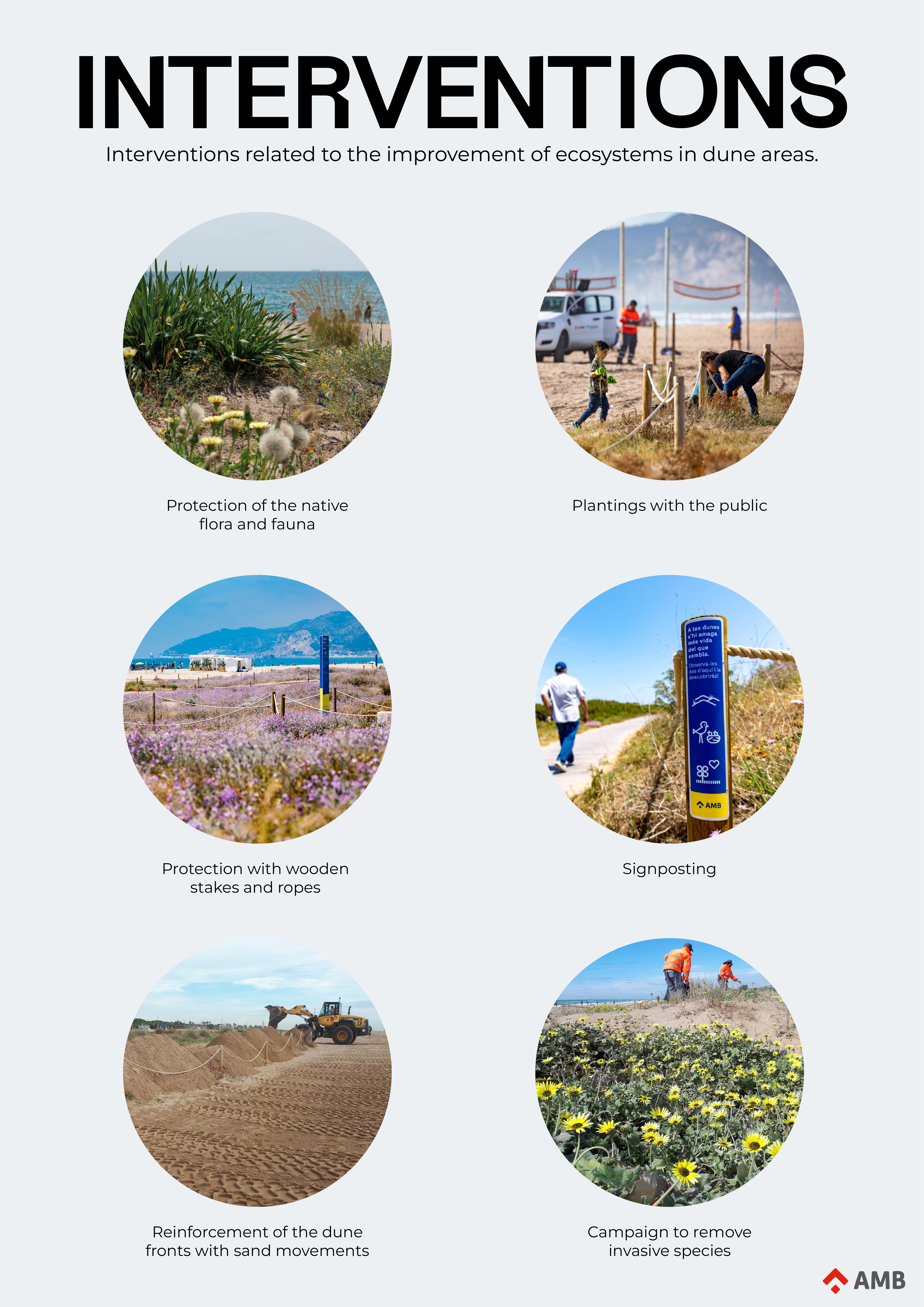
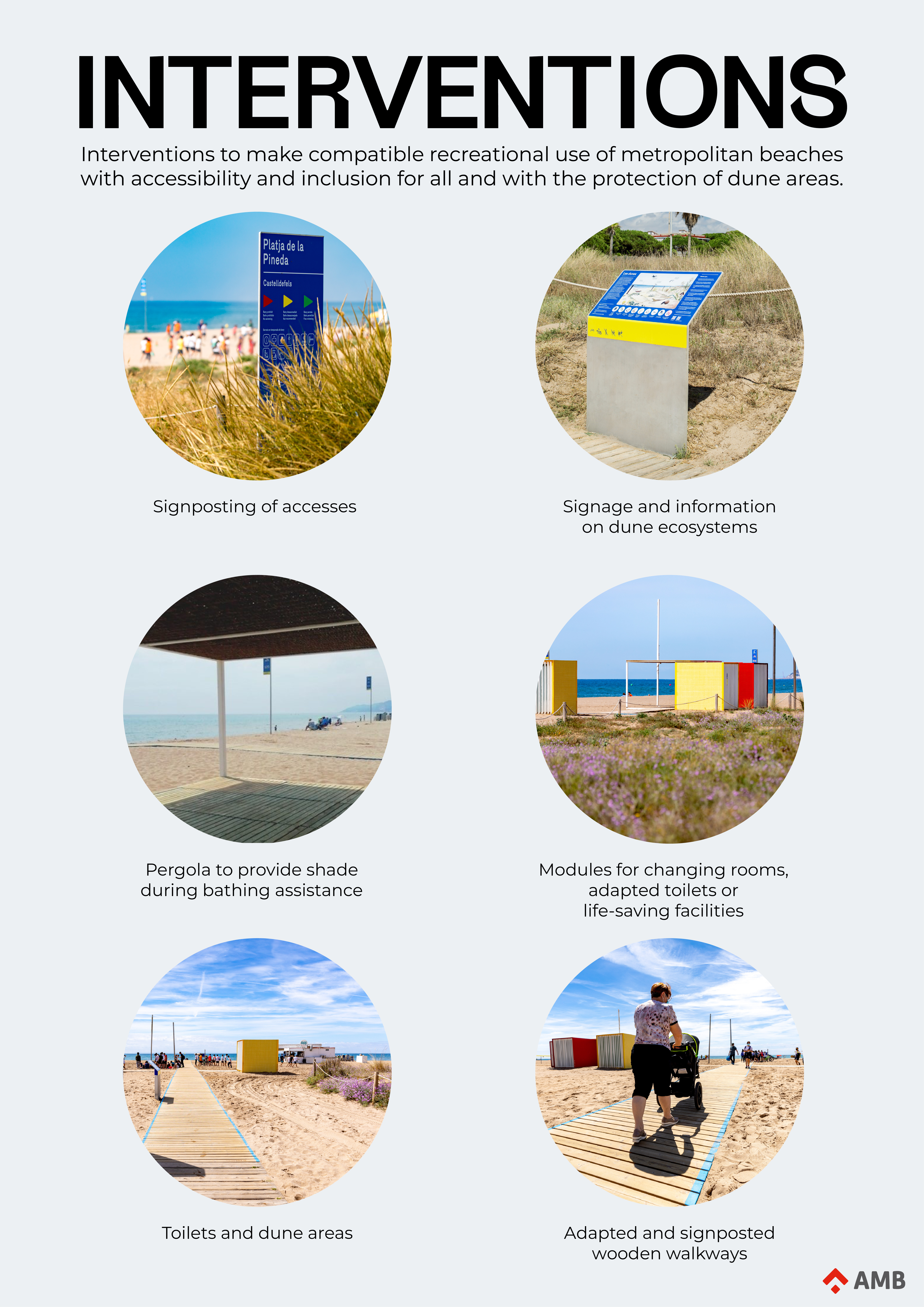
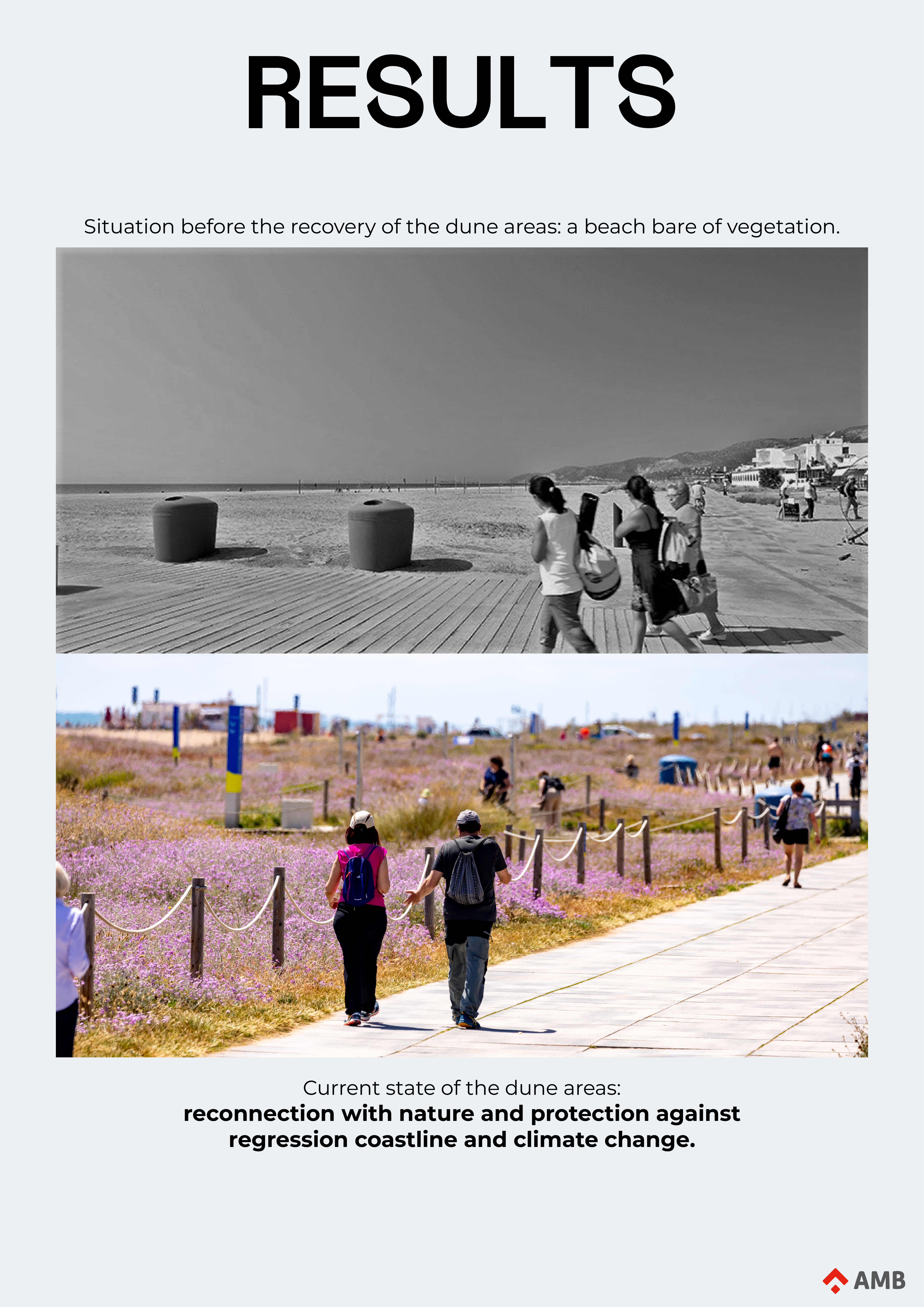
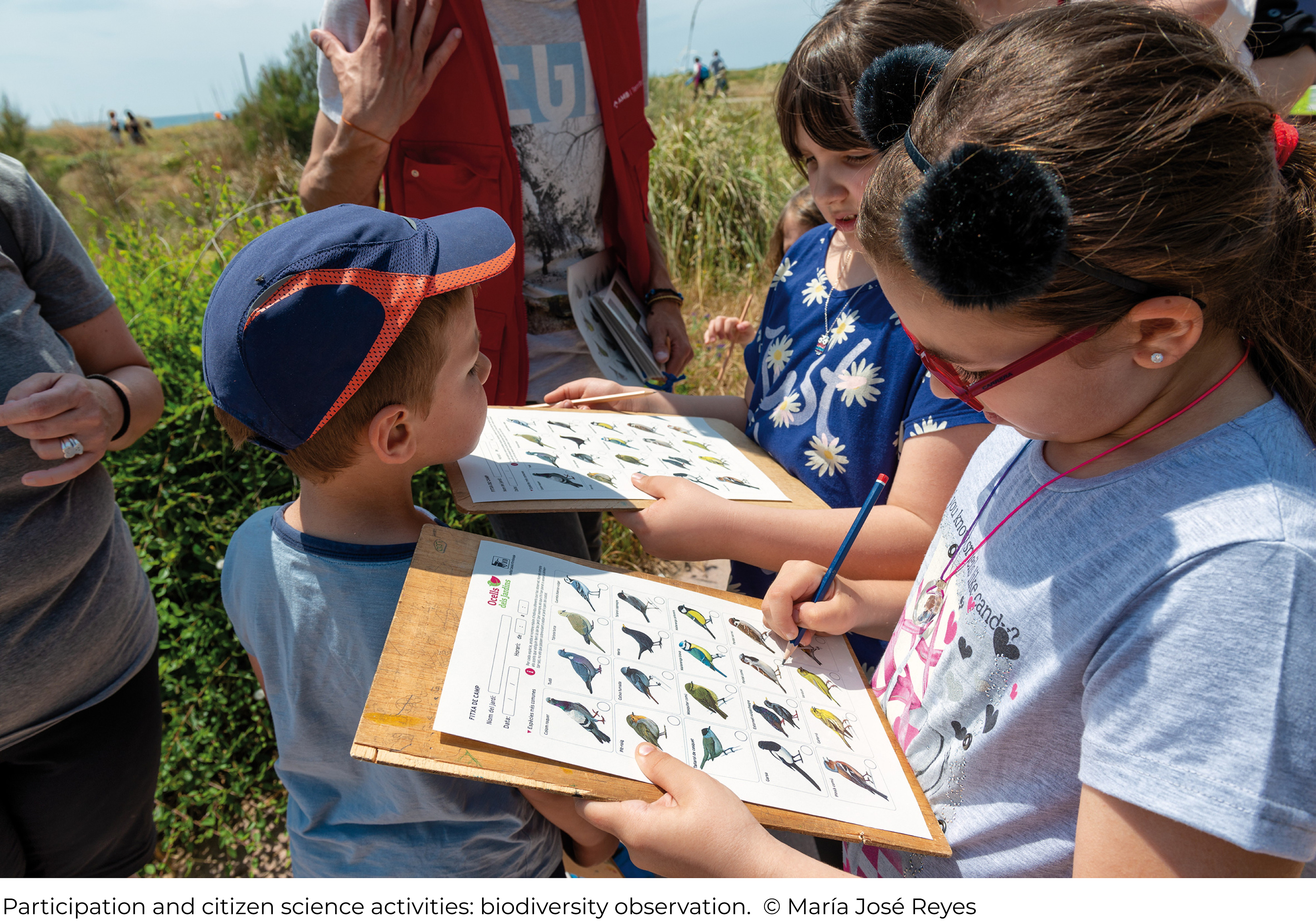
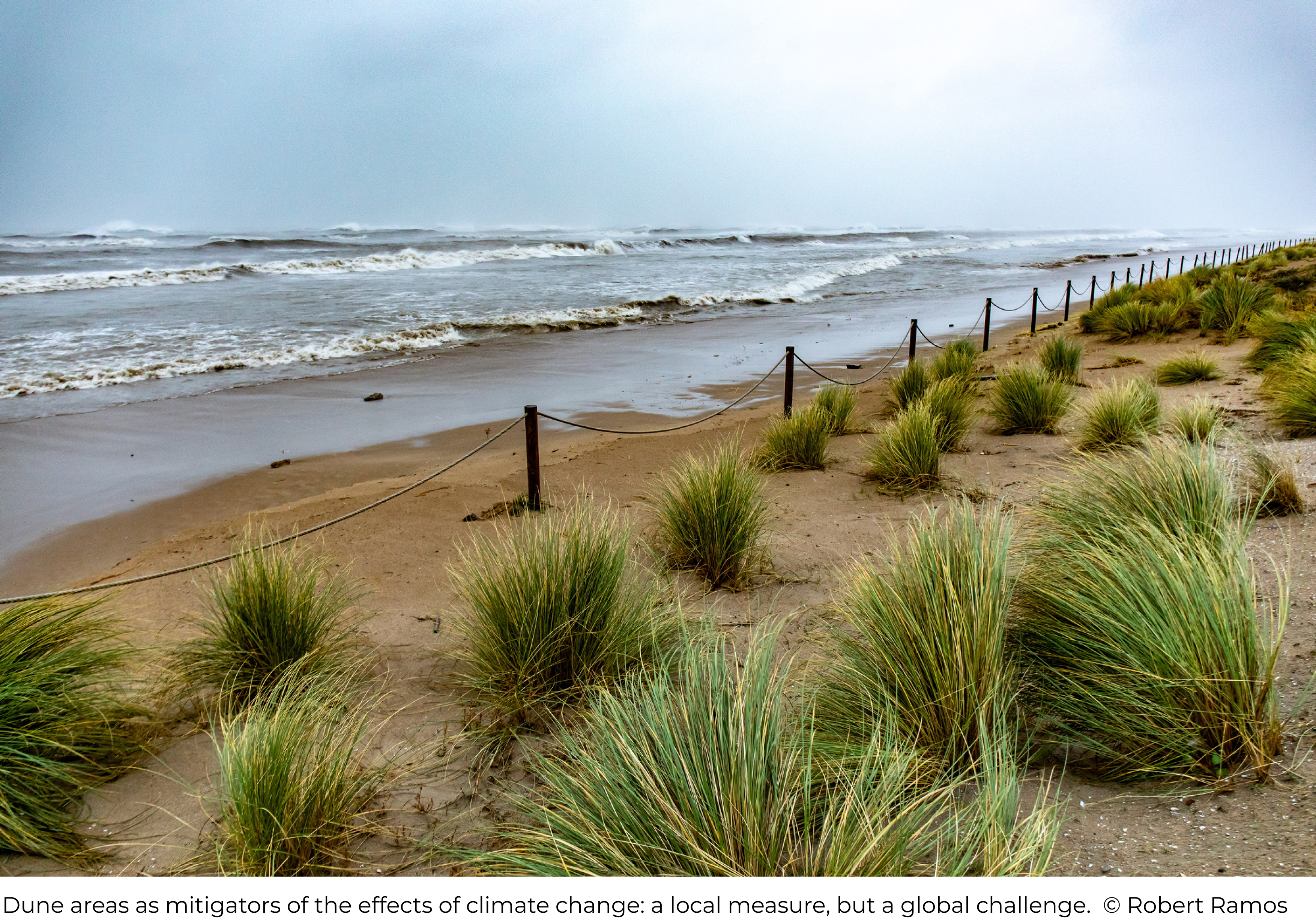
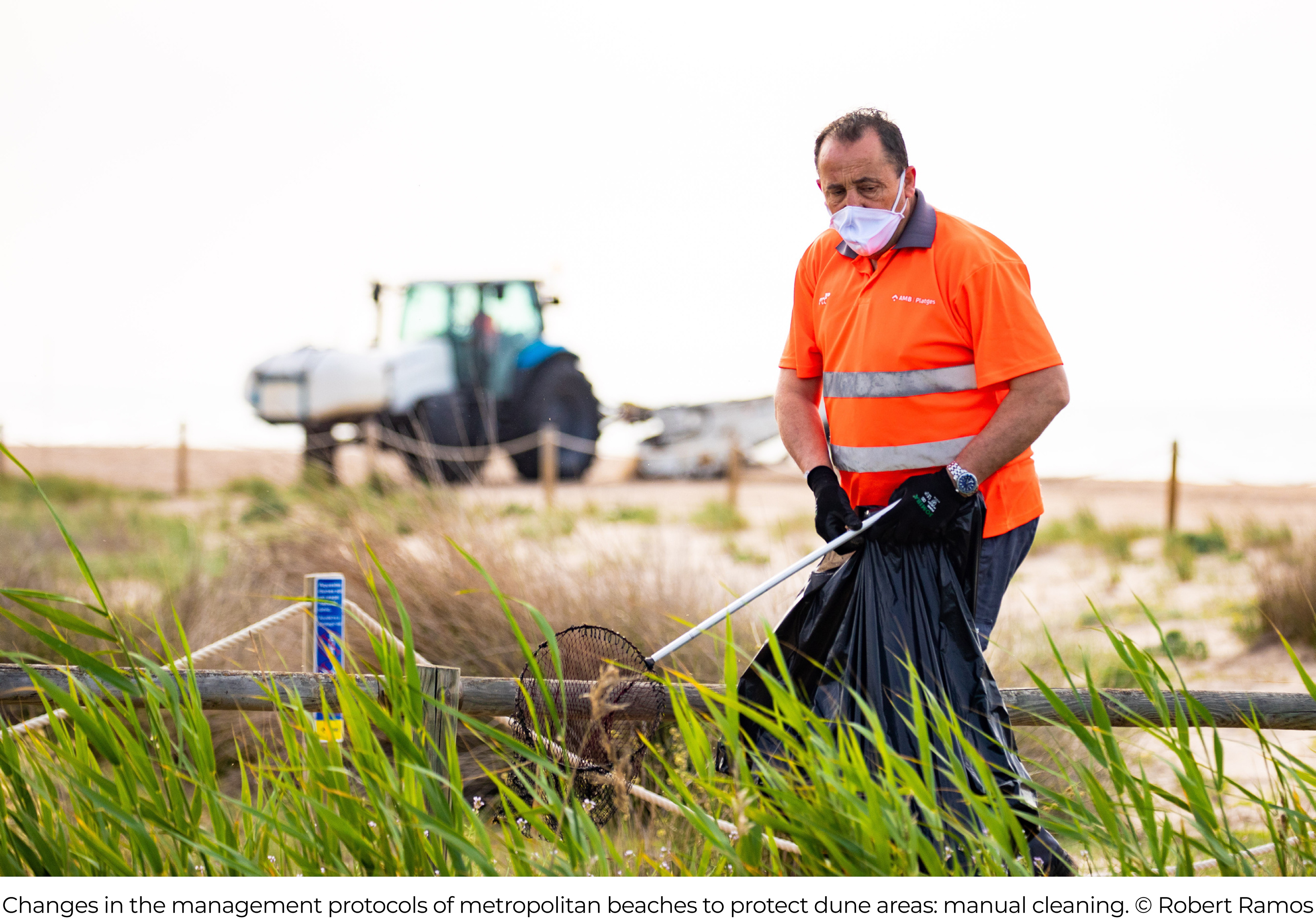
@AMB (Barcelona Metropolitan Area), 2021
Content licensed to the European Union.